
Awards
The FATE Master Educator Award celebrates a FATE member with more than ten years of collegiate teaching experience. The nominee should exhibit lasting commitment, significant contributions to Foundations education and contribution to FATE as a professional association.
The FATE Educator Award celebrates a FATE member in the early stages of their career with less than ten years of collegiate teaching experience. The nominee should exhibit a dedication to Foundations teaching, capacity for innovation, willingness to share knowledge and contribution to FATE as a professional association.
The shoutout Award celebrates and supports emerging foundations faculty and build the FATE community. The award covers the cost of registration and we will highlight award winners on the website and social media. Three awards recipients will be announced during the 2023 Conference.
2023 FATE Master Educator Award
Binod Shrestha
(V ì – n ô d' S h r ē s t h a)
Foundations Director/ Associate Professor
College of Visual Arts and Design, University of North Texas
Binod Shrestha has spent more than sixteen years dedicated to foundations pedagogy and curricular development at public and private universities. As the director of one of the largest Foundations Programs in the country at the College of Visual Arts and Design, University of North Texas (Denton), Shrestha provides leadership on foundations pedagogy that supports all majors in the college, includes mentorship/professionalization of graduate teaching assistants and lab instructors with a shared vision of inclusion (diversity, equity, and access), e.g., regular mentorship meetings, supportive literature, process on seeking support, access to (training on) mental health care, workshop sessions to address classroom issues, diversity of content, etc. In alignment with the University of North Texas’s identity as a Hispanic-Serving and Minority- Serving institution, Shrestha leads a diverse team that offers culturally diverse content to a diverse student population. The core principle of Shrestha’s leadership is ‘care’- for students, graduate teaching assistants, instructors, and staff members. Shrestha also participates in the college leadership team.
At CVAD, UNT, Binod Shrestha spearheaded the data-driven two-year-long participatory engagement with all college stakeholders that re-imagined and transitioned the first-year curriculum to an innovative multi and cross-disciplinary making-based curriculum that breaks the mold and supports all disciplines in visual art and design education. The new curriculum at CVAD provides agency in intercultural knowledge and conceptual and material exploration to students beyond skill building.
Currently, Binod Shrestha serves as a board member of the NCAA and the FATE DEIA Committee member and is engaged in mentorship in foundations curriculum and pedagogy. As an arts administrator, Binod has participated in Emerging Arts Administrators Fellowship, NCAA; Early Career Leader Training, NASAD; Academy for Anti-Racist Leadership, Penn State; AICAD BIPOC Academic Leadership Institute; Inclusion, Equity, and Community Building (IECB) Series, UNT among others.
Shrestha earned MFA from Bangalore University and the Pennsylvania Academy of the Fine Arts. Shrestha’s research interest lies in body, memory, the notion of home, and the intersection of violence. His work has been exhibited in the US, India, Nepal, and China, including Minneapolis Art Institute Museum and Beijing Biennale. He has received a McKnight Individual Artist Fellowship SW Minnesota, the Art Matters Foundations Grant, and the Skowhegan Fellowship in New York. Before joining the College of Visual Arts and Design, at the University of North Texas, Shrestha worked at the University of Wisconsin – La Crosse, WI, and the
University of Tulsa, OK

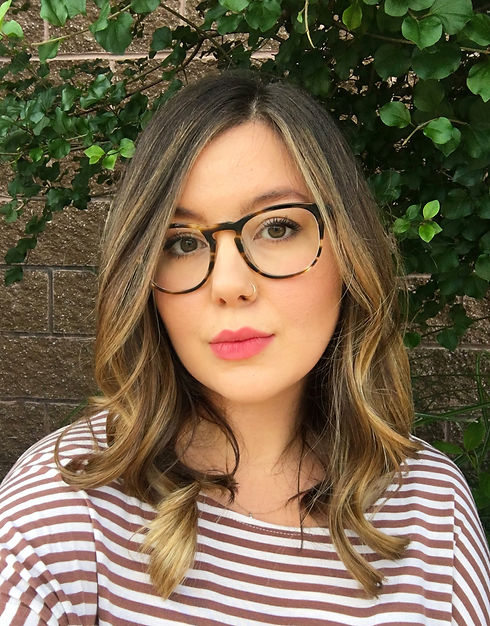
2023 FATE Educator Award
Jess Simorte
Jessica Simorte completed her MFA with an emphasis in painting at the University of Cincinnati’s College of Design, Architecture, Art, and Planning in 2014. She is currently living in Texas where she coordinates Sam Houston State's University's WASH Program and teaches within their new MFA Program. She has shown regionally, nationally, and internationally and has been included in numerous publications including multiple issues of New American Paintings, Art Maze Mag, and Maake Magazine. Most recently, she was named a “noteworthy artist” in New American Paintings issue #162. Significant exhibitions include solos at Galleri Urbane in Dallas and Virginia Commonwealth University, as well as inclusion in shows at Big Medium in Austin, CICA Museum in Gimpo, South Korea, and Trotter & Sholer in NYC. When she is not teaching, parenting, or painting, she’s probably dreaming of adopting another
dog.
2023 SHOUTOUT AWARDS
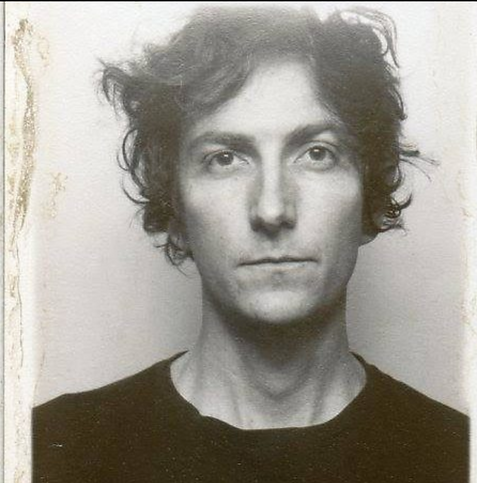
Jason Kofke is an artist and educator who participates in international cultural exchange
programs and artist residencies. Kofke’s projects attempt to lessen the divide between scientific specialization and lay knowledge. Kofke focuses on issues of climate change, race, gender, science and industry in the early 21st century. As a scholar, Kofke collaborates with scientists globally so as to better inform his artwork and lectures. Based on his scholarship, Kofke produces art in the form of videos, drawings, installations, performances and land art of science, environment, and culture. As an educator, Kofke devotes his pedagogy to preparing a generation for impending changes in climate, culture, industry, and perspectives of humans, products, and the Earth.
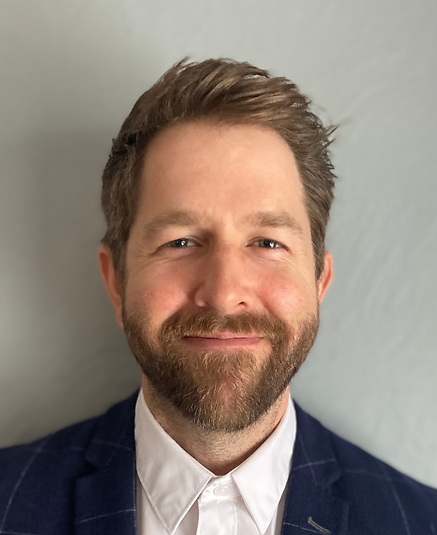
Matt Smith is an educator and artist whose teaching and creative practice are rooted in sculpture. In the classroom he encourages students to recognize artmaking as the most exciting form of involving oneself in the world. This notion crosses over into his studio work where he investigates ideas about place and explores the natural and cultural phenomena around him.
Smith received his MFA from the University of Colorado Boulder and a BA in Art Education from Anderson University (IN) along with studying several summers at the Chautauqua School of Art. After undergrad, Smith taught elementary art in public schools for six years. Originally from Indiana, Smith now resides in Huntington, WV where he continues his studio practice and teaches sculpture as a Visiting Assistant Professor at Marshall University.

Jim Graham is a South Florida based visual artist and educator whose work engages with the connections between landscape, identity, and climate as it specifically relates to lowland coastal communities. He is currently a studio art faculty member in the Dorothy F. Schmidt College of Arts & Letters at Florida Atlantic University, Boca Raton. Graham was formerly a Visiting Assistant Professor of Drawing and Painting at the University of Arizona (2018-2022) and Painting Coordinator at Southeastern Louisiana University (2013-2017). Select recent solo and small-group exhibitions include the Rosemary Duffy Larson Gallery (Miami, FL), Stove Works Gallery (Chattanooga, TN), Greenleaf Gallery (Los Angeles), and The Cole Pratt Gallery (New Orleans). Articles related to these recent exhibitions have been published in the New Orleans Review, Art + Design Magazine, and LUXE Interiors and Design. Jim Graham received his MFA from the University of Illinois in Urbana Champaign (2013) and BFA from Florida State University (2010).
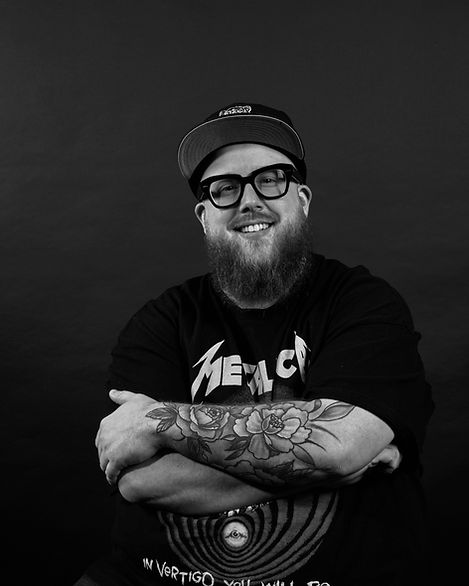
David Janssen Jr
David Janssen Jr. is an artist and educator from Cass City, Michigan. His works have used text as image that develops from confessions offered in spaces that are often scrolled past or ignored, including social media comments and personal creative writings. Recently, he has been developing work dedicated to celebrating the life of his sister Renae and honoring his journey through complicated grief and loss due to the Covid-19 pandemic.
David earned his MFA from the University of Idaho in 2018 and his BFA in Drawing + Painting in 2014 from Saginaw Valley State University. David leads and mentors students in a variety of studio courses as he currently serves as Scholarly Assistant Professor and 2D Foundations + Undergraduate Coordinator in the Department of Art at Washington State University in Pullman, WA.
2021 FATE Award winners
FATE Mater Educator
Stacy Isenbarger
Associate Professor of Art + Design & Foundations Coordinator
College of Art & Architecture
Stacy Isenbarger’s creative pursuits include sculpture, installation, mixed-media drawings, student mentorship and supporting community exchange through art. In her studio practice, she works to create dialog by highlighting perceived boundaries built from one’s environment or their perception of it. Through explorations of unexpected material collisions, poetic narratives, and shared iconography, Isenbarger continuously seeks ways to express complex negotiations of place and the desire to feel whole within it.
Isenbarger has worked as a Foundations Educator in some capacity since 2007 and has been involved with FATE since 2010, serving as FATE’s SECAC Representative in 2011-13, President in 2013-2017, & VP of Communications in 2017-18. In the summer of 2020 she co-created the pedological studio art project share website www.WhatDoWeDoNow.art with fellow FATE board alum Assistant Professor Naomi J. Falk. As Foundations Coordinator and Associate Professor of Art + Design at the University of Idaho in Moscow, ID she further celebrates her opportunities to explore creative communication and empowerment. She received her BFA at Clemson University & her MFA from the Lamar Dodd School of Art at the University of Georgia—two places she has tremendous gratitude for especially in regard to how both experiences shaped her approach to teaching. When she's not teaching or making—and sometimes when she is—she's usually dancing since the act continuously validates her joy of community acceptance and shaking up space.
FATE Emerging Educator
Raluca Iancu
Assistant Professor, Art & Visual Culture
Iowa State University
Raluca Iancu is currently an Assistant Professor at Iowa State University (ISU), where she teaches printmaking from Studio Fundamentals, to Graduate level courses. She is committed to fostering a spirit of community in the studio in order to create an encouraging and inclusive learning environment where the boundaries of traditional media can be pushed. She received an ISU Teaching Innovation Award for her creativity and speed in the transition to online instruction in the Spring of 2020, at the onset of the Covid-19 pandemic.
Raluca is passionate about mentoring her students to ensure their success beyond the classroom, by advising Focus Grant (ISU) recipients, participating in the freshman honors mentorship program, and serving as the advisor of the University Print Society. She strives to be a good model to her students through her mentorship, as well as through her own studio practice and research. Her work explores disaster, memory and vulnerability through different media, ranging from printmaking to performance, to edible art and printed objects. She questions the way we look at tragedy as well as the way we deal with the aftermath.
Raluca earned her MFA in Studio Art, Printmaking, from The University of Tennessee, Knoxville, and her BFA in Printmaking from the Nova Scotia College of Art and Design, Halifax, Canada. She has exhibited internationally, at venues including the Domek Miedziorytnika Gallery & Museum (Poland), the National Museum Robevci (Macedonia), the Art Museum of Cluj-Napoca (Romania), and the CICA Museum (Korea); as well as nationally at the International Print Center of New York (NY), the Bradbury Art Museum, (AR), and the Art Institute of Boston (MA). She has been an artist in residence in the United States, at the Hambidge Center for Creative Arts & Sciences (GA) and the Vermont Studio Center (VT), among others; as well as internationally at Art Print Residence (Spain), the Eugeniusz Geppert Academy of Fine Arts (Poland), and St Michael’s Printshop (Canada). She shares her creative scholarship and pedagogical research regularly at conferences such as FATE, MAPC, SGCI, and SECAC. Most recently, she became a Miller Faculty Fellow (ISU), in Spring of 2021, as the principal investigator of a grant titled “Pressing Letters: Integrating Printmaking into Graphic Design and Creative Writing.”
2019 FATE Award Winners
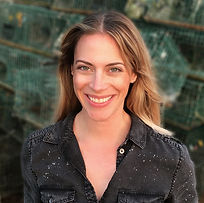
Meredith Starr has been teaching Foundations visual arts courses for the last seven years. She is currently an Assistant Professor at Suffolk County Community College. She teaches a broad range of courses each year including Drawing I, Drawing II, 2D Design, and 3D Design. She developed and teaches an online Modern Art History course, an Honors section of Drawing I, and co-created and teaches the special topics courses Gender, Body and Identity, and Developing Creativity and Imagination in the Arts. Starr is also advisor to the Studio Art Club for which she received Advisor of the Year in 2017. She is a regional coordinator for FATE, organizing events around important issues in teaching Foundations such as incorporating diversity and empathy into the classroom, as well as balancing technology with traditional art making processes. Starr believes the purpose of a Foundations education is to explore formal strategies and develop an aesthetic and conceptual voice in the shifting context of different media. She strives to transform the studio into a laboratory where students can experiment with how they want to convey the observable world.
Outside of school, Starr maintains an active interdisciplinary studio practice. She is a member of the Wayfarers Gallery in Bushwick, Brooklyn. Her artwork is based on data she observes and gives visibility to hidden patterns around us. She fuses science with artifacts of our humanity, exploring themes such as desire, memory, identity politics and ecology. Starr’s drawings have been published in Space Out: Memory and Tool Book. She has shown internationally in such cities as the Hague, Hong Kong, and Seoul, and nationally in Chicago, DC, Pasadena, and New York.
FATE Emerging Educator Meredith Starr
Assistant Professor
Suffolk County Community College

FATE Master Educator
Amy Schmierbach
Professor of Art and Design
Fort Hays State University
Amy Schmierbach is an artist, instructor, and activist. Her main goal in art and teaching is to empower others through art making and to help foster individuals to visually communicate their ideas in the studio, in the classroom, and in the community. Since 2000 Amy has taught drawing, foundations, and a multitude of other studio and general education courses at Fort Hays State University.
Amy received a BFA from Southern Illinois University – Edwardsville and a MFA from Illinois State University in Printmaking. Before and after graduate school Amy interned and then was an artist in residence at the Women’s Studio Workshop in upstate NY. Through these experiences, she learned from master teachers, artists, and activists in which she attributes to all of her successes in and out of the classroom.
Community outreach and service learning are both highly personal objectives for Amy. In today’s society, it is the artist’s responsibility to bring art to the community and to educate the public about art. Living in the rural Midwest this is even more important. This activism is an important objective she brings to her students. Amy believes that we cannot just teach art as a stand-alone skill. Skill is important but ART also has to be valued in our society. Amy and her students regularly work with local community organizations, school districts, senior living centers, and children and adults with intellectual and developmental needs.
Amy’s creativity activity reaches into both personal and social practice. Each of these practices inform each other and need each other to thrive. Society’s continual search for inner balance and work/life balance are main themes in her work. She uses formalized and repetitive processes such as printmaking, drawing, weaving, and embroidery that convey meditative rituals. These are also the techniques she brings into her social practice work with the hope to stimulate more mindfulness and peace in the community.
In 2011 Amy received the prestigious President’s Distinguished Scholar Award for her dedication to research at FHSU. Amy has exhibited her work across North America and has received many grants to help support her practice. Amy has shared her success in art and teaching at many conferences including FATE, CAA, Mid America Print Conference, and Mid America College Art Association.

FATE Leadership Award
Bethany Taylor
Studio Art Program Head / Associate Professor
Drawing + (WARP) Workshop for Art Research and Practice
University of Florida
Bethany Taylor is an artist and educator committed to art practices that promote interdisciplinary dialogues. Her work reveals ecological and socio-political narratives embedded in everyday materials and employs decorative and textile crafts as social and political activism.
Her individual and collaborative work has been exhibited nationally and internationally at over 100 galleries, museums, residencies and alternative spaces such as Seattle Arts Commission Gallery, Seattle WA; Post, BG Gallery, and Los Angeles Center for Digital Art, Los Angeles, CA; Site: Brooklyn, NY, New Mexico State University Art Gallery, Las Cruces, NM; Museum for Arts and Sciences, Macon, GA; Museum of Fine Art, Tallahassee, FL; Huntsville Museum of Art, AL; Alexandria Museum of Art, LA; Bob Rauschenberg Gallery, Fort Myers, FL; Musei di Genova Raccolte Frugone, Genova Nervi, Italy; Limerick City Gallery, Limerick, Ireland; Werkstadt, Berlin, Germany and Nelimarkka Museum, Alajärvi, Finland among others.
In her 20-year career teaching at the University of Florida, she has been primarily dedicated to the evolution, curricular development, and national visibility of a team-taught, interdisciplinary first-year art foundations course, Workshop for Art Research and Practice (WARP). Over the years, she has shared her teaching experiences and pedagogical research with faculty at other universities nationally and internationally one on one, or at conferences such as FATE, CAA, SECAC and MACAA. In addition, she collaborated with her partner Sean Miller and educators at Integrative Teaching International in 2011 to publish a teaching manifesto about WARP for the publication, Future Forward.
Recently, she has engaged in collaboration between the arts and sciences with the introduction of a new UF course, Thinking in Art and Science, which paired an art student with a biology/science/engineering student to work collaboratively on self-initiated research/art projects. A 2017-18 University of Florida Creative Catalyst Grant allowed for collaboration with faculty and staff from Biology, the UF Biodiversity Institute, the Harn Museum of Art, and the Florida Natural History Museum on a project titled UF BIOLINK, www.ufbiolink.org/, with the primary objective to cultivate creative and interdisciplinary connections across campus via the theme of biodiversity.
In her leadership, teaching and research she aims to connect knowledge and experience across disciplines and believes in the important role of art and creative practices to contribute to the production of political and social engagement and/or transformation.
2017 FATE Award Winners

FATE Master Educator Award
Rae Goodwin
Associate Professor & Director of Foundations, University of Kentucky
Rae Goodwin has worked as an artist-educator for twenty-three years. She began teaching in primary and secondary education in 1994 after earning a BA from the University of Framingham. When she became frustrated with the systems of education, she started her own arts enrichment business, which she ran for nine years before working in higher education. Her mission as an artist-educator has always been to empower individuals through creative expression. Goodwin began teaching on the college level at her alma mater, Winthrop University, where she taught as a TA and then a Lecturer. She moved from the Carolinas to the hills of Kentucky in 2007 to take a full-time position at the University of Pikeville. After two years in Pikeville, she left for the horse country of Lexington, where she still works, as the Director of Foundations and Associate Professor of Art Studio. Currently, Goodwin is also the Acting Associate of Undergraduate Studies for the School of Art and Visual Studies at the University of Kentucky.
Throughout her career, Goodwin has been unrelenting in both her pursuit of substantive change in arts education and in her drive to create art for exhibitions and performance art events. Towards substantive change in arts education, she has served on the boards of FATE and Integrative Teaching International (ITI). She has published articles in FATE in Review and FutureForward and presented at many conferences including SECAC and CAA. Her research into pedagogy in Foundations is influenced by many of her peers, Bell Hooks and Howard Gardner among others. She is focused on meaningful curricular change that takes us beyond how we were taught and towards an approach that is appropriate for our students and the contemporary field at large. Goodwin currently serves as the Vice President of ITI.
Goodwin brings the same level of commitment to her art practice, which focuses on gender-based assumptions of freedom, intimacy and risk. Since 2003, much of her work has been about maternal ancestry and familial lineage as they influence the construction of identity. Goodwin’s work has been shown work at the Atlanta Contemporary Art Center, McColl Center for Visual Art, Dimanche Rouge in Paris, 10/12 Gallery in Brussels, defibrillator gallery, Grace Space, Panoply Performance Laboratory, Month of Performance Art Berlin, SAIC and BIPAF. She has also worked extensively in residencies in France, Brussels, RU in Brooklyn, among others. Recent collaborations include Casey McGuire, Mairead Delaney, Thomas Albrecht and Petra Carroll. The exchange of ideas, modes of thinking and making, and interactions are critical to Goodwin’s overall practice and demand that she take greater and very necessary risks.

FATE Emerging Educator Award
M. Michelle Illuminato
Assistant Professor & CORE Program Head, Portland State University
M. Michelle Illuminato is an artist and educator who creates events, public-exchanges, and artworks to help reveal the complicated and often contradictory relationship between people, their culture and the land they live on. She creates dialogue and works in collaboration, often with next question as a way to better understand these relationships.
These activities translate into the classroom, where she asks students to slow down, to notice and to make connections to the people, ideas and issues in their world. Since 2006, Illuminato helped to shape the innovative Foundations Program at Alfred University in rural western New York. As of September 2016 she is turning her energy to creating a new CORE program at Portland State University in Oregon.
Illuminato counts her Key to the City of Aliquippa Pennsylvaniaas her most treasured public award and this summer her project the Lost & Found Factory, was recognized by Americans for the Arts Public Art Network Year in Review as one of the most compelling artworks from across the country. Other recent projects include: Tripoli Street BakeYard, Neu Kirche Contemporary Art Center, Pittsburgh, Art Advocacy Speaks: Art for Social Change Spinning Plate Gallery, Pittsburgh, Lost & Found Factory, Three Rivers Arts Festival, Pittsburgh, The Neighborhood Revisited, Open Engagement 2015, Pittsburgh, Pop Rocks, Strohl Art Center, Chautauqua Institute, NY, Lenz, Vogelfrei 10, Darmstadt, Germany.
Over the years, Illuminato has helped to reconnect people with their lost items, explored how women and girls experience public space, asked people from the Finger Lakes to literally get on a soapbox to talk to their neighbors, and worked with residents of Belgrade Serbia to create a new guide to their city. She has organized cook-off’s that feature foraged foods, created audio tours of people’s personal landmarks, asked people to use their cellphones to help illustrate a 200-year-old book. She’s explored local collections that shed light on communities and staged public readings. From all of these interactions, she has learned that people speak about their lives in ways that are striking, often poetic, and when placed next to the words of their neighbors, provide a new map to understanding a specific people and place.

FATE Leadrership Award
Scott Betz
Professor of Art + Visual Studies, Winston-Salem State University
Professor Scott Betz served as President and board member and member of FATE (Foundations in Art: Theory and Education) for 19 years. In his six years as FATE President, he saw first-hand the major national pedagogical directions of foundation teaching. During his tenure, he wrote, analyzed, and interpreted two national teaching surveys. Prof. Betz was also the interim director of the Center for Design Innovation, a University of North Carolina center of excellence. In his 28 years of college-level teaching, he has tried and tested a variety of successful approaches. As a practicing art professor who teaches 6-10 courses every year, he sees the challenges of daily art and design instruction. He has written four lab books for different courses that focus on active learning processes, which open opportunities for personal reflection and expression. Teaching at a historically black university, he sees the student reactions to the bias of Western artists, images and processes and strives for a balanced global approach in his examples. This attention to global, contemporary and digital applications won him a major research grant (the first for an artist/designer at his university) to develop more examples of the connections between global historical color/art usage and the contemporary digital present. His grant will help fund much of the research necessary for developing and co-writing a new textbook with his wife and art historian Dr. Laura Amrhein.
His creative research is well known internationally through successful collaborations among media and across a variety of genres including traditional studios, installation, sound and game design. His work has been the basis of more than 100 exhibitions in Colombia, China, Australia, Argentina, Sweden, Finland, Austria, Taiwan, Korea, Canada, Japan, and across the United States. In June 2013, he was invited to speak on the subject of 3D Printing for the international artist lecture series in conjunction with the Kraków Print Triennial at the Kunstlerhaus Museum, Vienna. In 2015, he was invited back in a collaborative exhibition "LOOP." His two children Will (16) and Kate (14) have been inspirational in his work and instrumental in building a theory about collaboration.
Some of the answers he found in regard to a theory of collaboration is that the best of collaboration is not simply an issue of multiple parties working on a complex project. For example, each collaborator might have a particular expertise and hand off performance, which is sometimes referred to as a collaboration “pipeline”. In the many steps of collaboration, those in earlier steps do not necessarily engage with those in the later steps down the line. A second example is where all collaborators have similar expertise making the workload lighter that is sometimes referred to as collaboration “teamwork” similar to a barn raising. Here, all may be present but no new challenges are put forth to stretch learning. His ideal collaboration is different from the two above. It is instead a combination of all-present at the same time and an embrace of the different expertise in the project. It is a process of immersing oneself in the discussions and activities and challenging one’s own expertise to grow and evolve through the team collaborative project that is at times uncertain. This type of collaboration embraces the diverse expertise of the pipeline but through the full team participation from beginning to end. For the majority of the time, one is placed outside of their comfort zone. It is this model that nurtures the new discovery of becoming which is shared and reaffirmed by the group and raises the value of this collaborative approach higher.
Betz joined Winston-Salem State University as an Associate Professor in 2004. He was appointed as the Foundation and Studio Art Coordinator in 2005-07 and as the Art Program Coordinator in 2007-09. Betz was then promoted to Professor of Art + Visual Studies in 2010.


2013 FATE Award Winners
FATE Distinguished Service Award:
Jerry Johnson, Troy University (left)
FATE Emerging Educator Award:
Eric Standley of Virginia Tech (right)
2011 FATE Award WinnerS
FATE Master Educator Award:
Jan Feldhausen of Milwaukee
Institute of Art and Design (left)
FATE Emerging Educator Award:
Elizabeth Bilyeu of Portland Community
College (right)
2009 FATE Award Winners
FATE Master Educator Award:
Mary Stewart, Florida State University
FATE Emerging Educator Award:
Ann Coddington, Eastern Illinois University
2007 FATE Award Winners
FATE Master Educator Award:
Jeff Boshart, Eastern Illinois University
FATE Emerging Educator Award:
Lee Ann Garrison, University of Wisconsin-Milwaukee
2015 FATE Award Winners


